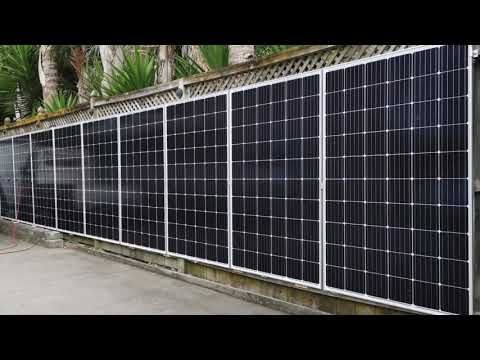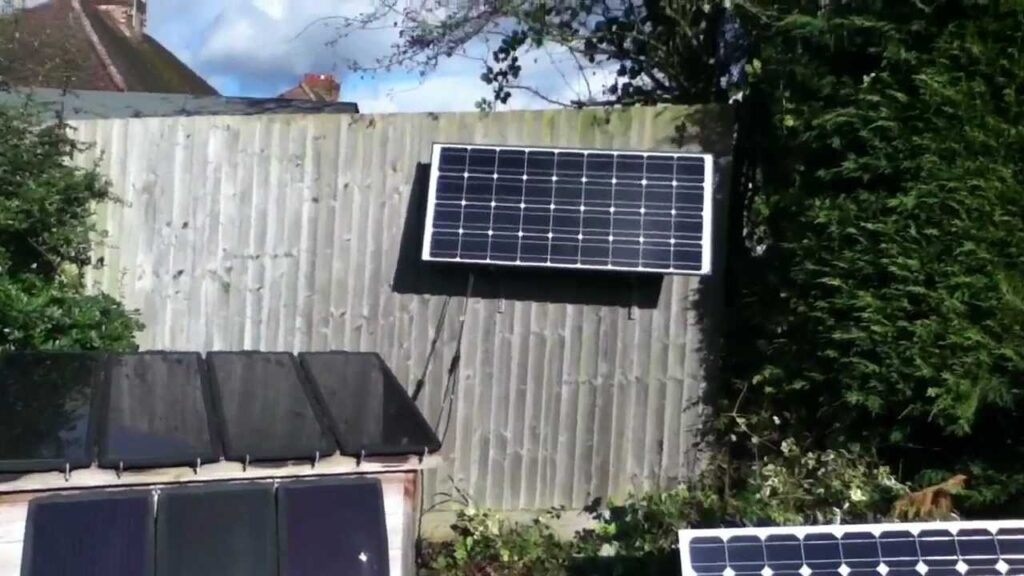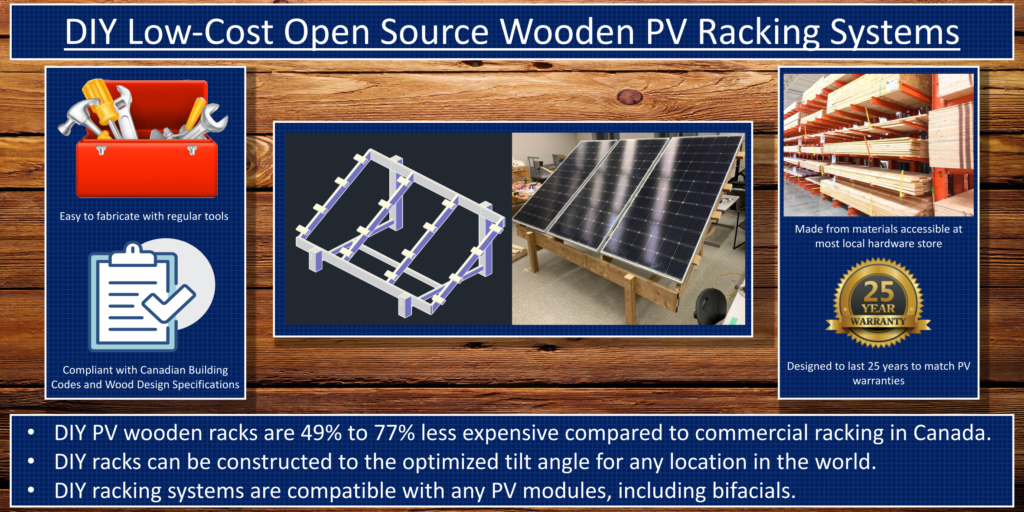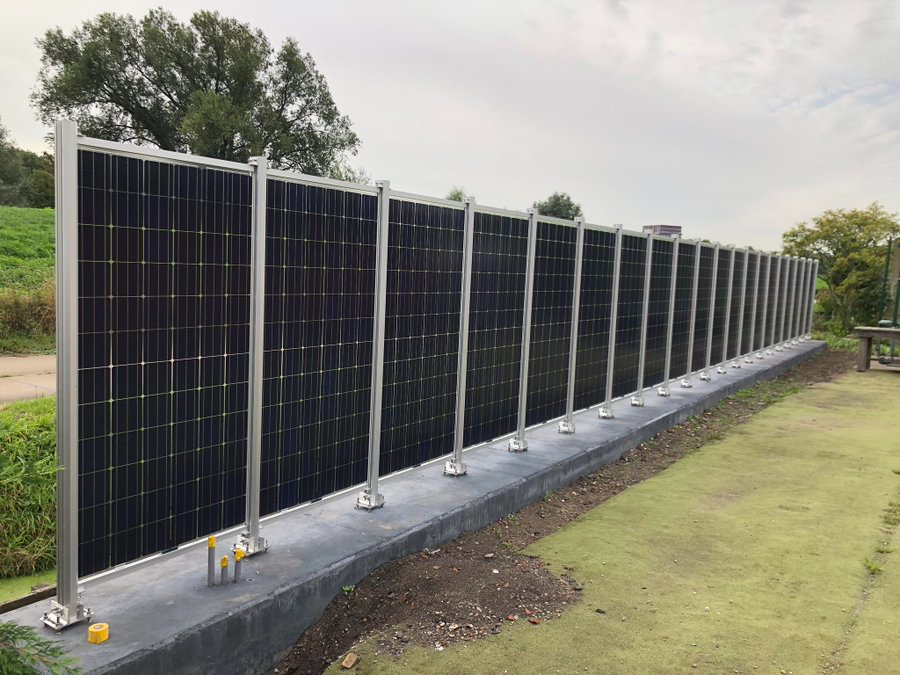Looking to expand your knowledge and expertise on fences? Look no further! “64. Incorporating Solar Panels into Fence Designs” explores the world of fences, providing comprehensive information and guidance on different types, sizes, shapes, and materials. From wooden fences to vinyl and metal options, this blog covers it all. Discover the benefits, maintenance requirements, and aesthetic appeal of various fences, along with tips for choosing the right size and shape based on your specific needs. By addressing common questions through the inclusion of 10 Q&A at the end of each post, this blog aims to be your go-to resource for all things fence-related. So, let’s jump in and learn more about incorporating solar panels into fence designs, creating a sustainable and functional addition to any property.
Incorporating Solar Panels into Fence Designs
Solar panels are becoming an increasingly popular choice for homeowners looking to harness renewable energy and reduce their reliance on traditional energy sources. One innovative way to incorporate solar panels into your property is by integrating them into your fence design. By adding solar panels to your fence, you can take advantage of the sun’s energy while also enhancing the functionality and aesthetics of your outdoor space. In this article, we will explore the various benefits, types, installation considerations, and maintenance aspects of incorporating solar panels into fence designs.
Benefits of Solar Panels
Renewable Energy Source
Solar panels generate electricity by converting sunlight into energy. Unlike fossil fuels, which are finite resources that contribute to pollution and climate change, solar energy is a clean and abundant source of renewable energy. By incorporating solar panels into your fence design, you are utilizing a sustainable and environmentally-friendly energy source.
Reduced Electricity Costs
One of the significant advantages of incorporating solar panels into your fence design is the potential for reduced electricity costs. Solar panels generate electricity, which can be used to power your home, including appliances, lighting, and other electrical devices. By relying on solar energy, you can decrease your dependence on the electrical grid and lower your monthly electricity bills.
Environmental Sustainability
Solar energy is a sustainable energy source that does not release harmful greenhouse gas emissions into the atmosphere, unlike traditional energy sources. By choosing to incorporate solar panels into your fence design, you are contributing to a cleaner, healthier environment and helping to combat climate change.
Energy Independence
Incorporating solar panels into your fence design allows you to become more energy independent. By generating your electricity, you are no longer solely reliant on the electrical grid. This independence can provide peace of mind, especially during power outages or times of high energy demand when the grid may experience strain.

Types of Solar Panels
There are several types of solar panels available in the market, each with its own advantages and considerations. Understanding the different types will help you make an informed decision when incorporating solar panels into your fence design.
Monocrystalline Panels
Monocrystalline solar panels are made from a single crystal structure and are known for their high efficiency and sleek black appearance. They can generate more electricity in limited space compared to other types of solar panels but may be more expensive.
Polycrystalline Panels
Polycrystalline solar panels are made from multiple crystal structures and are less expensive compared to monocrystalline panels. Although they are slightly less efficient, they still provide a cost-effective solution for incorporating solar panels into your fence design.
Thin-Film Panels
Thin-film solar panels are lightweight and flexible, making them suitable for irregular and curved surfaces. While they are less efficient than crystalline panels, they can be a versatile option for certain fence designs.
BIPV Panels (Building-Integrated Photovoltaics)
BIPV panels are designed to seamlessly blend into the architecture of a building or structure. These panels can be integrated into various elements, including fences, to provide a visually appealing and functional solar energy solution.
Choosing the Right Fence Design
When incorporating solar panels into your fence design, it is important to choose a fence design that complements the solar panels and meets your specific needs. Consider the following factors when selecting a fence design:
Assessing Site Conditions
Before choosing a fence design, assess the site conditions of your property. Consider the amount of available space, the orientation of your property, and any potential shading or obstructions that could impact the efficiency of the solar panels.
Privacy vs. Visibility
Determine whether your primary goal is to enhance privacy or maintain visibility. This consideration will influence the design and materials of your fence.
Style and Aesthetics
Choose a fence design that aligns with the style and aesthetics of your property. Whether you prefer a more modern, traditional, or rustic look, there are fence designs available that can incorporate solar panels seamlessly.
Fence Height and Layout
Consider the desired height and layout of your fence. The height of the fence can impact the exposure of the solar panels to sunlight, so ensure it is designed to optimize solar energy generation.

Installation Considerations
When incorporating solar panels into your fence design, several installation considerations need to be taken into account to maximize their efficiency and functionality.
Available Sun Exposure
To ensure optimal solar energy generation, assess the amount of sun exposure your property receives throughout the day. Install the solar panels in areas that receive the most sunlight to maximize their energy production.
Shading and Obstructions
Identify any potential shading or obstructions that may block sunlight from reaching the solar panels. Consider trees, nearby buildings, or other structures that may cast shadows and adjust the panel placement accordingly.
Orientation and Tilt Angle
The orientation and tilt angle of the solar panels can significantly impact their energy generation. Ideally, the panels should be oriented towards the south (in the Northern Hemisphere) and positioned at an angle that maximizes sunlight absorption.
Wind Load Considerations
When incorporating solar panels into your fence design, ensure that the fence and the panels can withstand the wind load in your area. Consult with a professional to determine the appropriate wind load and design the fence accordingly.
Structural Support for Solar Panels
Proper structural support is crucial when incorporating solar panels into your fence design. Consider the following aspects to ensure the longevity and stability of the panels:
Selecting Sturdy Materials
Choose fence materials that provide sufficient strength and durability to support the weight of the solar panels. Opt for high-quality materials, such as steel or aluminum, that can withstand various weather conditions.
Fence Post and Rail Reinforcement
To enhance the structural support for the solar panels, reinforce the fence posts and rails. This reinforcement will provide additional stability and ensure the panels remain securely in place.
Anchoring Systems
Utilize appropriate anchoring systems to securely fasten the solar panels to the fence. Consulting with a professional installer can ensure that the anchoring systems are suitable for your specific fence design and installation location.

Wiring and Electrical Connections
Proper wiring and electrical connections are essential for the safe and efficient functioning of your solar panels. Consider the following aspects during the installation process:
Inverter and Battery Placement
Identify suitable locations for the inverters and batteries that will convert and store the electricity generated by the solar panels. Ensure that the placement allows for proper ventilation and protection from the elements.
Properly Sealed and Protected Wiring
Protect the wiring connecting the solar panels to the electrical components by properly sealing and routing the wires. This will help prevent damage from moisture, pests, and other environmental factors.
Grounding and Electrical Safety
Ensure that the solar panels and associated electrical components are properly grounded to mitigate the risk of electrical hazards. Consult with a licensed electrician to ensure compliance with local electrical codes and regulations.
Maintenance and Durability
Regular maintenance and proper care are essential for the longevity and optimal performance of your solar panels. Consider the following aspects when incorporating solar panels into your fence design:
Regular Cleaning and Inspection
Periodically clean the solar panels to remove any dust, dirt, or debris that may accumulate and reduce their efficiency. Additionally, conduct routine inspections to identify and address any potential issues promptly.
Protecting Against Weather Conditions
Choose durable materials for the solar panels that can withstand various weather conditions, including rain, wind, and temperature fluctuations. Properly seal and protect the panels to minimize the risk of damage.
Replacing Faulty or Underperforming Panels
If any of the solar panels become faulty or underperforming, it is essential to address the issue promptly. Consult with a professional to assess the problem and determine whether repair or replacement is necessary.

Aesthetics and Integration
When incorporating solar panels into your fence design, it is crucial to consider their placement and integration to ensure a visually appealing result. Consider the following aspects:
Panel Placement and Orientation
Place the solar panels strategically on the fence to optimize sunlight absorption while maintaining a balanced and aesthetically pleasing design. Consider aligning the panels with the fence posts or integrating them into specific sections of the fence for a seamless look.
Color and Design Options
Solar panels come in various colors and designs, allowing you to choose options that complement your fence and overall property aesthetics. Explore different styles and finishes to find the best fit for your design preferences.
Integration with Fence Materials and Style
Ensure that the solar panels are integrated seamlessly into the fence design, both in terms of materials and style. Coordinate the colors, textures, and overall appearance of the panels with the chosen fence materials to create a cohesive look.
Costs and Return on Investment
Before incorporating solar panels into your fence design, it is essential to consider the costs involved and the potential return on investment. Evaluate the following factors:
Initial Installation Costs
The cost of incorporating solar panels into your fence design can vary based on various factors, including the number of panels, fence size, design complexity, and local installation costs. Obtain detailed quotes from professional installers to determine the initial investment required.
Long-Term Savings on Electricity Bills
Calculate the potential long-term savings on your electricity bills when utilizing solar energy. While the upfront costs may seem significant, the reduction in monthly electricity expenses can result in substantial savings over time.
Tax Credits and Financial Incentives
Research local, state, and federal tax credits and financial incentives available for solar panel installations. These incentives can contribute to reducing the overall costs and improving the return on investment.
Payback Period and Return on Investment
Consider the payback period required to recoup your initial investment in solar panels. Calculate the return on investment based on the estimated savings on electricity bills and any available financial incentives.

Government Incentives and Regulations
Familiarize yourself with the government incentives and regulations related to incorporating solar panels into your fence design. Consider the following factors:
Federal and State Incentives
Research federal and state-level incentives, such as tax credits, grants, or rebates, available for solar panel installations. Stay up-to-date with any changes in incentive programs to maximize the financial benefits.
Zoning and Permitting Requirements
Understand the zoning and permitting requirements in your area regarding the installation of solar panels. Ensure compliance with regulations and obtain any necessary permits before starting the installation process.
Interconnection Standards
Research the interconnection standards set by the local utility company to connect your solar panels to the electrical grid. Understanding these standards will help ensure a smooth and compliant installation process.
By considering the benefits, types, installation considerations, maintenance requirements, aesthetics, costs, and government incentives and regulations associated with incorporating solar panels into fence designs, you can make an informed decision that aligns with your needs and goals.
